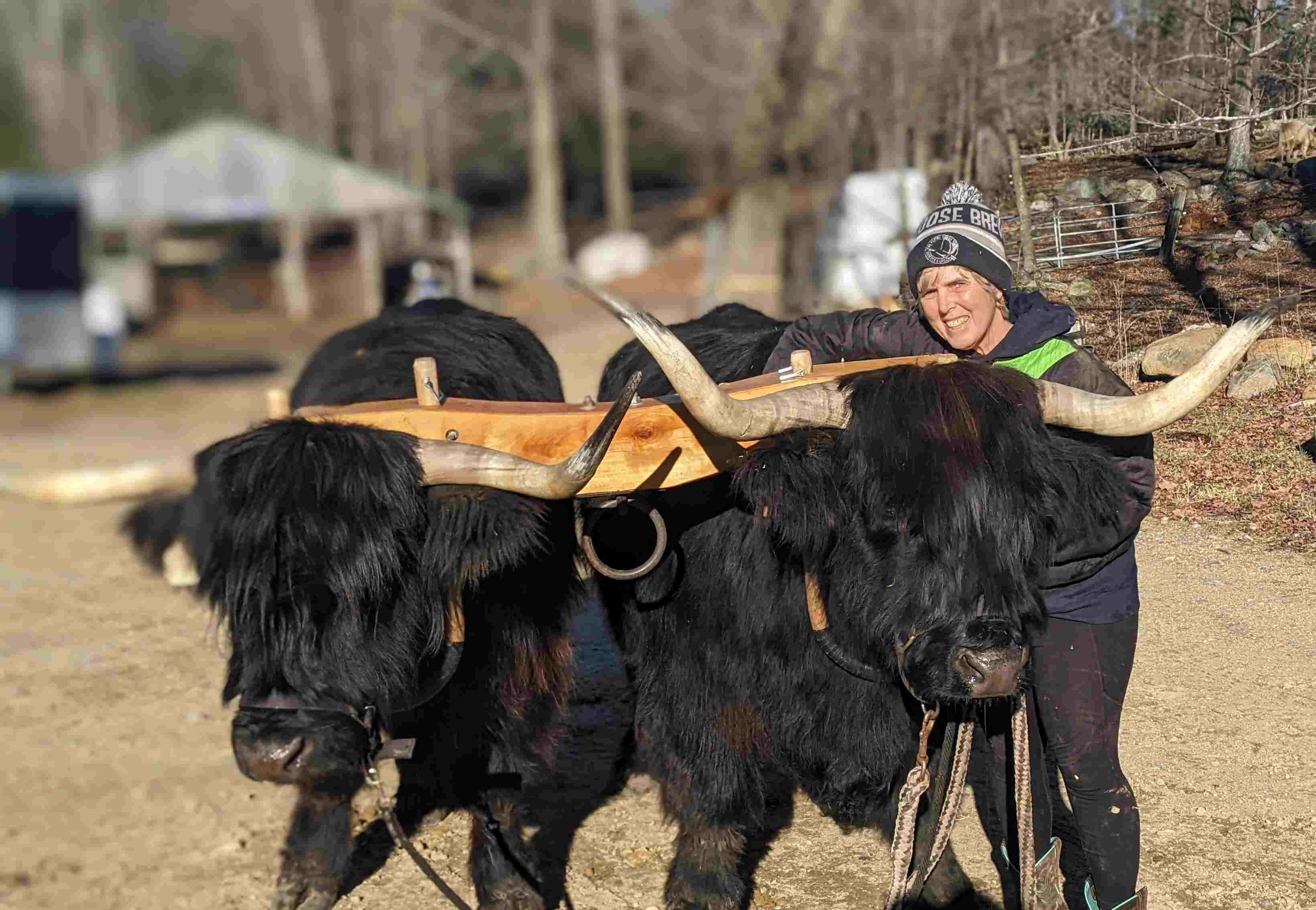Tender butts and tough shoulders
posted on
March 16, 2020

I was a vegetarian for five years, mostly because I didn’t want to support massive feed-lot operations which corral 150,000 cattle or more and can process 3,000 a day. I didn’t have any plan to save the planet from beef. But I did – and still do – want to save cattle from CAFO (Confined Animal Feed Operation) systems. Then, we bought two Scottish Highlander cows to keep our fields clear of brush, which is when my cow addiction started. Back in 2002, we soon added five cows, two calves, three steers, and one bull – a herd of 11.
The question was, what to do with the steers? Their job was to grow and eventually be processed for meat. The decision was painful, but because I knew my cattle had a good life and would be processed humanely. I permitted myself when the time came to eat meat again, but the problem was I didn’t know how to cook.
I could open a can of soup, fry a hamburger, or boil a pot of spaghetti, and that was about it. So my first attempt to cook a roast was a disaster. The raw meat was a deep red with very little fat. I was sure 40 minutes in the oven at 350 degrees would produce a good result. Wrong. The taste was OK, but the meat was tough as leather. The meat was at the correct temperature; it looked good; what had I done wrong?
The meat was a shoulder roast, a tough cut that should have been cooked in a pot for hours. Back then, I didn’t know a shoulder roast from a butt roast. And the key to good cooking is knowing what part of the animal a cut is from. Why is that? It has to do with how a cow walks.
Meat is a muscle, and the more exercise a muscle gets, the tougher the meat. The front legs carry 80 percent of the steer’s weight, and his back end carries the other 20 percent. This means the front end has the tougher meat and the back, the more tender.
But exercise improves flavor so that that tough shoulder meat is tastier. To decide how to cook it, ask, “Is this meat from the front or the rear?” The front is mostly for pot roasts; the rear is for steaks or oven roasts.
What about the middle? It depends. Delmonico or ribeye steaks are tender, but short ribs are not.
One of our customers recently tried two different recipes to roast a cross-cut shank; both failed. Shank meat is from either the front or rear legs, tough because the legs are always moving. When the customer cooked the shank for hours in a crockpot, the meat became tender, and the bone added rich flavor; just like a stew, but better.
The good news is that those tasty, tougher cuts cost less. Patience is rewarded.
Currently, our cow herd fluctuates between 45 and 55. And although I’m no longer a vegetarian, I will only eat meat that was raised humanely. Here is my favorite recipe for a pot roast cooked in an Instant Pot or pressure cooker. Your roast will be tender and delicious, the way it’s supposed to be.
Stay tuned! Next week: Knowing how to cut a piece of meat can make it even more tender.




